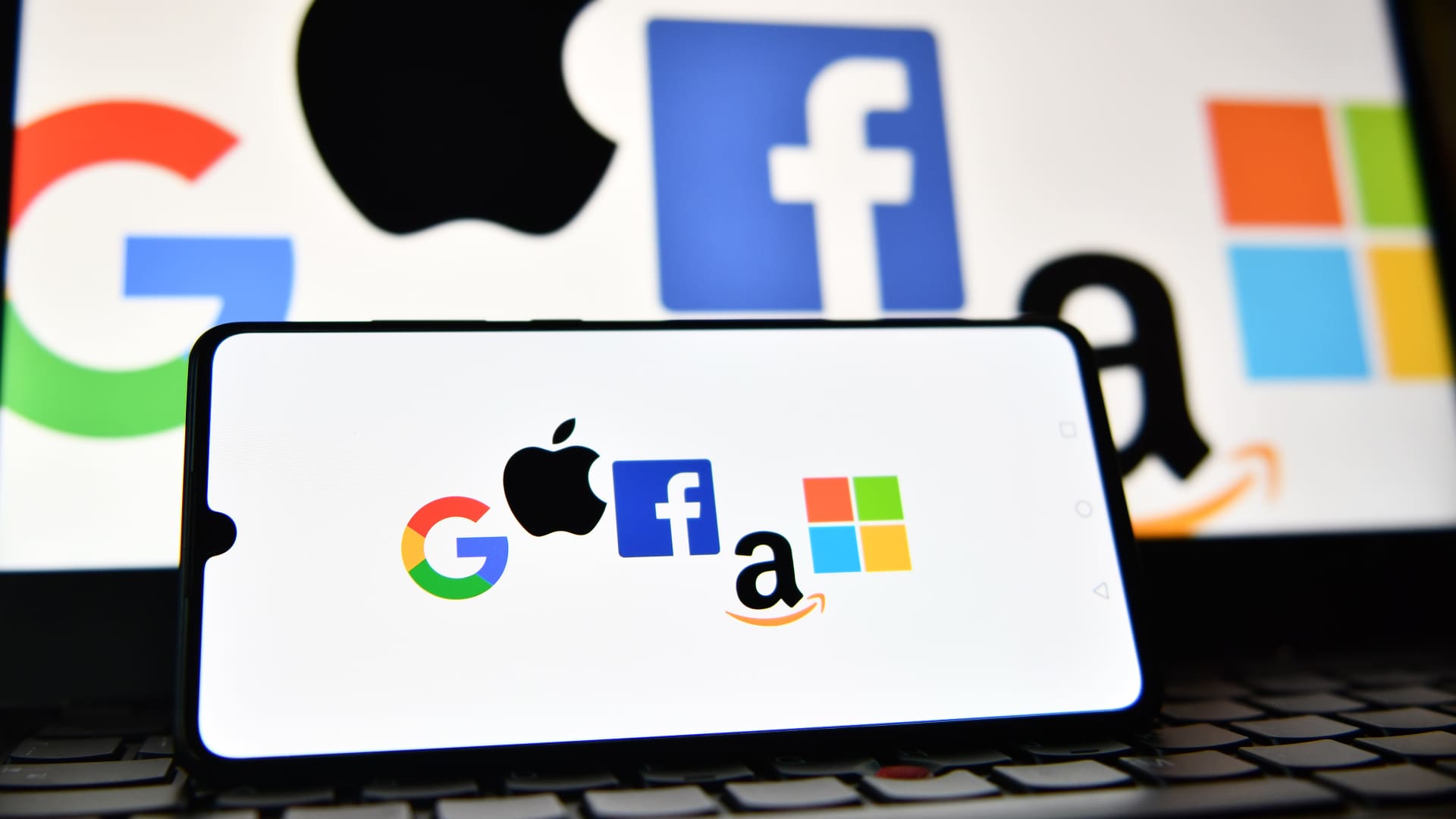My investment colleagues were on edge for weeks in anticipation of the December quarter for Big Tech. Now that we’ve seen the results for Microsoft , Alphabet , Apple , Amazon and Meta Platforms , it’s time to assess what we’ve learned and the implications. The Jan. 31 session, which came after the first Big Tech earnings day, was tough. That was especially the case in the Nasdaq Composite corral, which dropped more than 2% that day. Whether it was the slightly disappointing number from Google’s search ad sales or Federal Reserve Chair Jerome Powell’s extreme judiciousness , investors chose to bail first and ask questions later. The week ended on a much higher note when Meta and Amazon earnings crushed the estimates, and buyers flooded into them, pushing the whole market to a level slightly higher than where it closed on Jan. 30. The table below examines the quarterly results for the Gang of Five and Nvidia, which closes its quarter with a month lag. Among these equities, earnings ranged from spectacular (Meta and Amazon) to uninspiring (Alphabet), with Microsoft and Apple meeting elevated expectations that only the uber-great can provide. A non-stock devotee would be blown away by any of the following data points: In the fourth quarter , Meta grew ad volume by 21% year over year. Amazon’s sales for the fourth quarter hit $170 billion. Microsoft’s cloud revenue for the fiscal second quarter was $33.7 billion, up 24% year over year. Alphabet reported its Google Search and other unit saw revenue grow about 13% from the year-ago quarter. Apple said it has 2.2 billion active devices in use. To add more perspective on the magnitude of these tech giants, consider that J.D. Power forecasted that consumers would spend $578 billion on new vehicles in 2023. Meanwhile, net sales for Amazon in 2023 hit $574.8 billion – a 12% increase from the year earlier. It’s no wonder that these businesses are valued at their current levels, but there is no doubt that they need to keep the earnings coming. The above table illustrates the compound annual growth rate analysts expect for the mega caps, the S & P 500, and the 494 stocks excluding the Big Six. Based on these numbers, the tech giants should grow net income at a 21.6% compound rate over the next three years, compared to 7.6% for the remainder of the S & P 500 members. This analysis calculates net income rather than earnings per share, which excludes application of free cash flow to share repurchases. Therefore, the growth in EPS could be even higher. The largest six trade at an average price/earnings multiple of 29.5 based on earnings over the next twelve months. This compares to 20.3 for the S & P 500. Valuation conclusions that rely on price-earnings multiples are simplistic, but a 50% PE premium based on profits growing almost three times as fast seems very reasonable. Not only do the mega caps grow faster, but their net profit margins of 27.5% for 2023 trounce the 10.7% average for the S & P 500. Investors respect their power and scope, and competitors fail to make inroads. Two years ago, skeptics bemoaned Meta’s losing battle with TikTok. That chorus has dulled in recent months as the Facebook parent fought back effectively. (Cash/short-term investments and ROA are based on most recent completed period, excluding unprofitable entities) As illustrated above, these companies are sitting on cash hoards and they stockpile more each year, widening their moat. When rates are low, they borrow cheaply. When rates are high, they coin interest income. Their return on assets is stellar compared to the universe of their public peers, at an average of 22% versus 7.1%. We own these stocks because of their sales and earnings growth, spectacular margins, great balance sheets and attractive valuations relative to the market when considering these statistics. What are the risks? A market that first becomes top heavy, followed by investors who begin to take profits. Other threats include unexpected regulatory changes and black-swan events such as a massive privacy compromise. We believe that investors should own a decent weight in some combination of Apple, Microsoft, Alphabet, Meta and Nvidia to participate in their success – although, probably not at their 28% existing weight in the S & P 500. Yes, of course, there are risks, but these are equities, so that comes with the territory. Review the numbers above and understand what you are buying. — Karen Firestone is chairperson, CEO and co-founder of Aureus Asset Management, an investment firm dedicated to providing contemporary asset management to families, individuals and institutions.
This story originally appeared on CNBC

